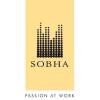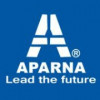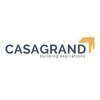


i
Kalpataru
Limited
Work with us
![]()
Filter interviews by
Kalpataru Limited Interview Questions and Answers
121 Interview questions
APFC panel design involves calculating reactive power requirements to improve power factor in electrical systems.
Determine the total load in kW and the existing power factor.
Calculate the required reactive power (kVAR) using the formula: Q = P * (tan(acos(PF1)) - tan(acos(PF2))).
Select appropriate capacitor banks based on the calculated kVAR.
Consider harmonics and ensure capacitors are rated for the specific appli...
The total load of a project is the sum of all electrical, mechanical, and plumbing loads calculated for design and safety.
Identify all electrical loads: lighting, HVAC, equipment.
Calculate mechanical loads: heating, cooling, ventilation requirements.
Assess plumbing loads: water supply, drainage systems.
Consider future expansions or changes in load requirements.
ASHRAE guidelines provide standards for HVAC system design, ensuring efficiency, comfort, and safety in various environments.
ASHRAE Standard 62.1: Ventilation for Acceptable Indoor Air Quality - outlines minimum ventilation rates for different building types.
ASHRAE Standard 90.1: Energy Standard for Buildings - sets energy efficiency requirements for HVAC systems to reduce energy consumption.
ASHRAE Guideline 36: H...
Guidelines for car park ventilation and pressurization systems per NBC and NFPA ensure safety and efficiency.
Ensure adequate air exchange rates to dilute vehicle emissions, typically 0.5 to 1.0 air changes per hour.
Implement smoke control systems to manage smoke during a fire, using mechanical or natural ventilation methods.
Design pressurization systems to prevent smoke infiltration into adjacent areas, maintainin...
Data backup involves creating copies of data to prevent loss and ensure recovery in case of failure or disaster.
Identify critical data: Determine which files, databases, or systems need to be backed up.
Choose a backup method: Options include full, incremental, or differential backups.
Select storage media: Use external hard drives, cloud storage, or network-attached storage (NAS).
Schedule regular backups: Automate ...
DNS translates domain names to IP addresses; DHCP assigns IP addresses to devices on a network dynamically.
DNS stands for Domain Name System, which resolves human-readable domain names (like www.example.com) to IP addresses (like 192.0.2.1).
DHCP stands for Dynamic Host Configuration Protocol, which automatically assigns IP addresses and other network configuration to devices on a network.
DNS servers store records ...
The two main causes of accidents on site are human error and unsafe conditions, both of which can lead to serious incidents.
Human Error: Mistakes made by workers, such as not following safety protocols. Example: A worker forgetting to wear a helmet.
Unsafe Conditions: Hazards present in the work environment, like slippery floors or faulty equipment. Example: A wet floor leading to slips.
I would implement proactive measures, training, and continuous monitoring to address safety challenges effectively on site.
Conduct regular safety audits to identify potential hazards and mitigate risks.
Implement a comprehensive training program for all employees, emphasizing safety protocols and emergency procedures.
Encourage a safety-first culture by promoting open communication and reporting of unsafe conditions...
Accident investigation involves systematic analysis to identify causes and prevent future incidents.
1. Secure the scene: Ensure the area is safe and prevent further accidents.
2. Gather evidence: Collect physical evidence, photographs, and witness statements.
3. Interview witnesses: Speak with those involved or who witnessed the incident to gather insights.
4. Analyze data: Review all collected information to identif...
HIRA (Hazard Identification and Risk Assessment) is a systematic process to identify hazards and assess risks in the workplace.
Identify hazards: Recognize potential sources of harm, such as machinery, chemicals, or work practices.
Assess risks: Evaluate the likelihood and severity of harm from identified hazards.
Implement controls: Develop strategies to eliminate or mitigate risks, such as safety training or protec...
Kalpataru Limited Interview Experiences
143 interviews found
I appeared for an interview in Dec 2024.
(3 Questions)
- Q1. What is the grade of concrete
- Ans.
The grade of concrete refers to its strength and is determined by the ratio of cement to sand to aggregate.
The grade of concrete is typically denoted by a number followed by the letter 'M', such as M20, M30, etc.
The number in the grade represents the compressive strength of the concrete in megapascals (MPa) after 28 days of curing.
For example, M20 concrete has a compressive strength of 20 MPa, while M30 concrete has a ...
- Q2. What is the unit used for estimating painting work?
- Ans.
The unit used for estimating painting work is square feet.
Square feet is commonly used to estimate the amount of paint needed for a project.
Other units like square meters can also be used depending on the region.
Calculations are based on the surface area to be painted.
- Q3. What you mean by RL in survey
- Ans.
RL in survey stands for Reduced Level, which is the vertical distance between a point and a reference point.
RL is used in surveying to determine the elevation of a point relative to a known reference point.
It is commonly used in construction projects to ensure accurate leveling of structures and surfaces.
RL can be calculated using leveling instruments such as a dumpy level or a theodolite.
For example, if a benchmark ha...
(2 Questions)
- Q1. Types of cement
- Ans.
Types of cement include Portland cement, rapid-hardening cement, and sulfate-resistant cement.
Portland cement is the most common type and is used in general construction.
Rapid-hardening cement sets quickly and is often used in repair work.
Sulfate-resistant cement is used in areas where soil or water has high sulfate content.
- Q2. Size of columns
- Ans.
The size of columns in civil engineering is determined based on the load they will support and the height of the structure.
Columns are sized based on the load they will support, with larger loads requiring larger columns.
The height of the structure also plays a role in determining column size, with taller structures requiring larger columns for stability.
Factors such as material strength, column spacing, and building c...
Interview Preparation Tips
I appeared for an interview in Dec 2024.
(2 Questions)
- Q1. What is the full form of SBC
- Q2. Find different RLs from the given figure
- Ans.
Different RLs can be found by measuring the vertical distance between points on the figure.
Measure the vertical distance between points A and B to find RL AB
Measure the vertical distance between points C and D to find RL CD
Measure the vertical distance between points E and F to find RL EF
(1 Question)
- Q1. What is the Diamter of TBM
- Ans.
The diameter of a Tunnel Boring Machine (TBM) varies depending on the project requirements and can range from a few meters to over 15 meters.
The diameter of a TBM is typically determined by the size of the tunnel being constructed.
TBMs used for subway tunnels may have a smaller diameter compared to those used for large transportation tunnels.
Some TBMs can have diameters exceeding 15 meters for mega tunneling projects.
T...
I appeared for an interview in May 2025, where I was asked the following questions.
- Q1. What are the ASHRAE guidelines for designing HVAC systems?
- Ans.
ASHRAE guidelines provide standards for HVAC system design, ensuring efficiency, comfort, and safety in various environments.
ASHRAE Standard 62.1: Ventilation for Acceptable Indoor Air Quality - outlines minimum ventilation rates for different building types.
ASHRAE Standard 90.1: Energy Standard for Buildings - sets energy efficiency requirements for HVAC systems to reduce energy consumption.
ASHRAE Guideline 36: High-P...
- Q2. What are the guidelines for designing a car park ventilation and pressurization system in accordance with the National Building Code (NBC) and the National Fire Protection Association (NFPA)?
- Ans.
Guidelines for car park ventilation and pressurization systems per NBC and NFPA ensure safety and efficiency.
Ensure adequate air exchange rates to dilute vehicle emissions, typically 0.5 to 1.0 air changes per hour.
Implement smoke control systems to manage smoke during a fire, using mechanical or natural ventilation methods.
Design pressurization systems to prevent smoke infiltration into adjacent areas, maintaining a p...
Interview Preparation Tips
I appeared for an interview in Apr 2025, where I was asked the following questions.
- Q1. What are the workability control and productivity improvement with use of new automation machines and CNC tecnology?
- Ans.
Automation and CNC technology enhance workability control and boost productivity in manufacturing processes.
Increased precision: CNC machines provide high accuracy, reducing errors in production.
Faster production rates: Automation allows for continuous operation, significantly increasing output.
Reduced labor costs: Fewer manual interventions are needed, lowering overall labor expenses.
Enhanced flexibility: CNC technolo...
- Q2. How to control cost by making more use of automation machineries in place of workers and manpower?
- Ans.
Utilizing automation can significantly reduce costs by enhancing efficiency, minimizing errors, and optimizing resource allocation.
Increased Efficiency: Automated machinery can operate continuously without breaks, leading to higher output rates.
Reduced Labor Costs: By replacing manual labor with machines, companies can save on wages, benefits, and training costs.
Minimized Errors: Automation reduces human error, leading...
Interview Preparation Tips
I appeared for an interview in Feb 2025, where I was asked the following questions.
- Q1. What are the contribution percentages to the Employees' Provident Fund (EPF) from both the employee and employer?
- Ans.
The EPF contributions are typically 12% from the employer and 12% from the employee in India.
Employees contribute 12% of their basic salary to the EPF.
Employers also contribute 12%, but a portion goes to the Employee Pension Scheme (EPS).
For example, if an employee's basic salary is $1,000, both the employee and employer contribute $120 each.
In some cases, the employer's contribution may vary based on the size of the o...
- Q2. What are the contribution percentage to the Employees' State Insurance Corporation (ESIC) ?
- Q3. What is the process for calculating gratuity, and what are the eligibility criteria?
- Ans.
Gratuity is a financial benefit for employees based on tenure and salary, calculated using a specific formula.
Eligibility: Employees must complete at least 5 years of continuous service.
Calculation: Gratuity = (Last drawn salary × 15/26) × Number of years of service.
Example: If an employee's last salary is $1,300 and they worked for 10 years, gratuity = ($1,300 × 15/26) × 10 = $7,500.
Tax: Gratuity is tax-free up to a c...
Interview Preparation Tips
I appeared for an interview in May 2025, where I was asked the following questions.
- Q1. Where do you see yourself in the next 5 years
- Ans.
In five years, I envision myself leading innovative tech initiatives, driving team success, and contributing to strategic growth.
I aim to advance to a senior leadership role, overseeing major technology projects that align with company goals.
I plan to enhance my skills in emerging technologies, such as AI and machine learning, to drive innovation.
I aspire to mentor and develop a high-performing tech team, fostering a c...
- Q2. What is your opinion on AI and technology space in general
Interview Preparation Tips
Assistant General Manager Quality Assurance Interview Questions & Answers
posted on 2 Jul 2025
I appeared for an interview in Jun 2025, where I was asked the following questions.
- Q1. Related to Management skills
- Q2. Related to Variations from BOQ
I appeared for an interview in Apr 2025, where I was asked the following questions.
- Q1. About our Previous Projects Experience? About Steel Materials? Simply Supported beams and Bending Moment? Aggregate Metal 1,2,3? Shuttering and Mivan Shuttering? Water Proofing ? Mix Designs ?
- Q2. Steel Testing? Bricks Quality?
Interview Preparation Tips
I appeared for an interview in Mar 2025, where I was asked the following questions.
- Q1. What Inspires your lighting concepts?
- Ans.
My lighting concepts are inspired by nature, culture, and the emotional impact of light on spaces and people.
Nature: I draw inspiration from natural light patterns, like how sunlight filters through trees, creating dynamic shadows.
Cultural Elements: Incorporating traditional lighting styles from various cultures, such as lanterns in Asian design.
Emotional Impact: Understanding how different lighting temperatures can ev...
- Q2. What lighting software and tools are you most comfortable using?
- Ans.
I am proficient in various lighting software, including AutoCAD, Revit, and Dialux, for effective design and visualization.
AutoCAD: Used for 2D and 3D drafting, creating detailed lighting layouts.
Revit: Ideal for Building Information Modeling (BIM), allowing for integrated lighting design.
Dialux: Specialized software for calculating and visualizing lighting in spaces.
SketchUp: Useful for quick 3D modeling and visualizi...
Interview Preparation Tips
I appeared for an interview in May 2025, where I was asked the following questions.
- Q1. What are the two main causes of Accidents or Incidents on site?
- Ans.
The two main causes of accidents on site are human error and unsafe conditions, both of which can lead to serious incidents.
Human Error: Mistakes made by workers, such as not following safety protocols. Example: A worker forgetting to wear a helmet.
Unsafe Conditions: Hazards present in the work environment, like slippery floors or faulty equipment. Example: A wet floor leading to slips.
- Q2. How would you tackle the safety challenges on site?
- Ans.
I would implement proactive measures, training, and continuous monitoring to address safety challenges effectively on site.
Conduct regular safety audits to identify potential hazards and mitigate risks.
Implement a comprehensive training program for all employees, emphasizing safety protocols and emergency procedures.
Encourage a safety-first culture by promoting open communication and reporting of unsafe conditions with...
Top trending discussions






Kalpataru Limited Interview FAQs
The duration of Kalpataru Limited interview process can vary, but typically it takes about less than 2 weeks to complete.
Tell us how to improve this page.
Kalpataru Limited Interviews By Designations
- Kalpataru Limited Civil Engineer Interview Questions
- Kalpataru Limited Senior Engineer Interview Questions
- Kalpataru Limited Assistant Engineer Interview Questions
- Kalpataru Limited Assistant Manager Interview Questions
- Kalpataru Limited Assistant Engineer - Civil Interview Questions
- Kalpataru Limited Assistant General Manager Technology Interview Questions
- Kalpataru Limited Insurance Manager Interview Questions
- Kalpataru Limited Senior Finishing Engineer Interview Questions
- Show more
Interview Questions for Popular Designations
- Civil Engineer Interview Questions
- Senior Engineer Interview Questions
- Assistant Engineer Interview Questions
- Assistant Manager Interview Questions
- Executive Interview Questions
- Senior Executive Interview Questions
- Consultant Interview Questions
- Graduate Engineer Trainee (Get) Interview Questions
- Show more
Overall Interview Experience Rating
based on 165 interview experiences
Difficulty level
Duration
Interview Questions from Similar Companies
Kalpataru Limited Reviews and Ratings
based on 981 reviews
Rating in categories
|
Assistant Manager
245
salaries
| ₹8.7 L/yr - ₹14.6 L/yr |
|
Senior Engineer
184
salaries
| ₹5 L/yr - ₹11.1 L/yr |
|
Senior Executive
102
salaries
| ₹4.8 L/yr - ₹11.2 L/yr |
|
Assistant Engineer
96
salaries
| ₹2.6 L/yr - ₹7 L/yr |
|
Assistant General Manager
87
salaries
| ₹17 L/yr - ₹37 L/yr |

Sobha

Lodha Group

Cushman & Wakefield

Godrej Properties
- Home >
- Interviews >
- Kalpataru Limited Interview Questions










